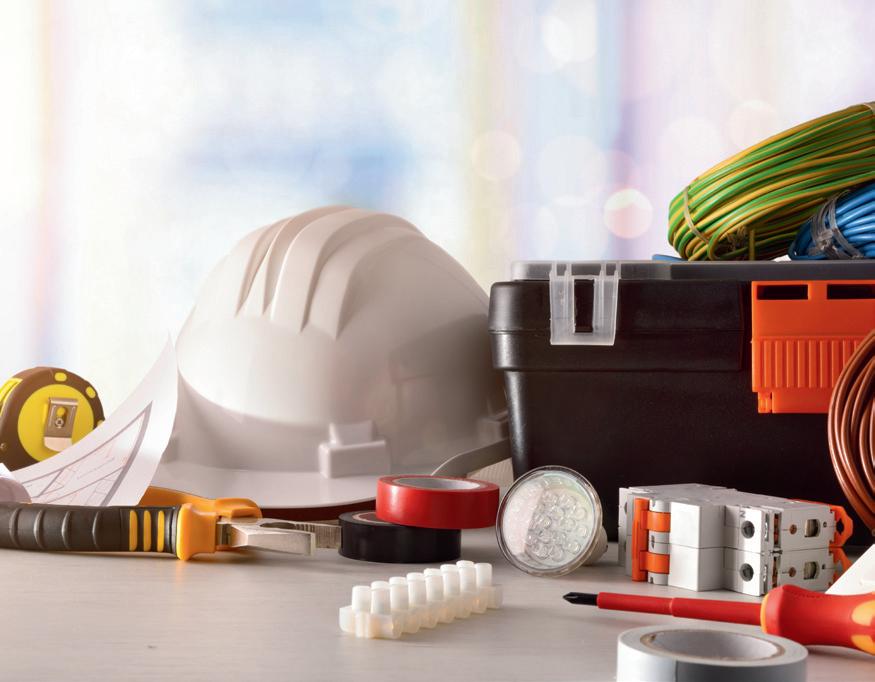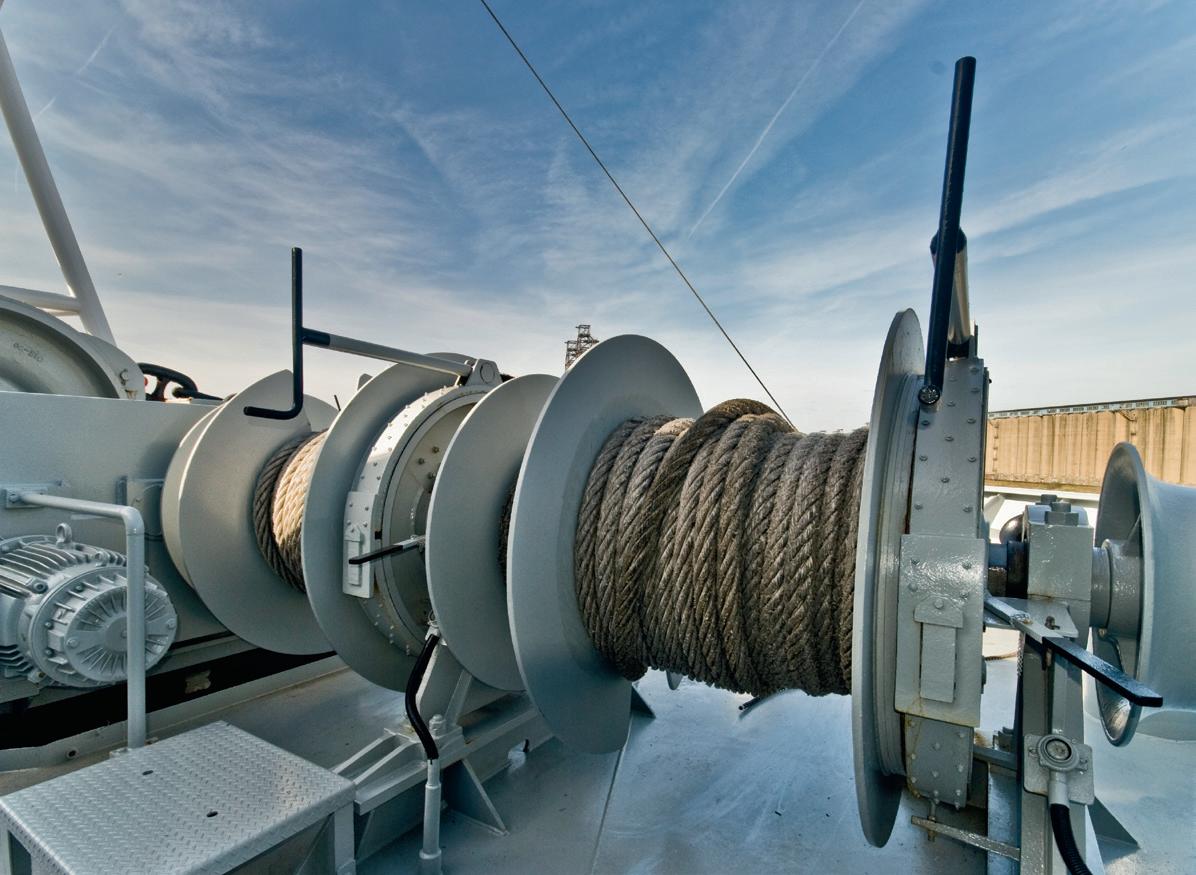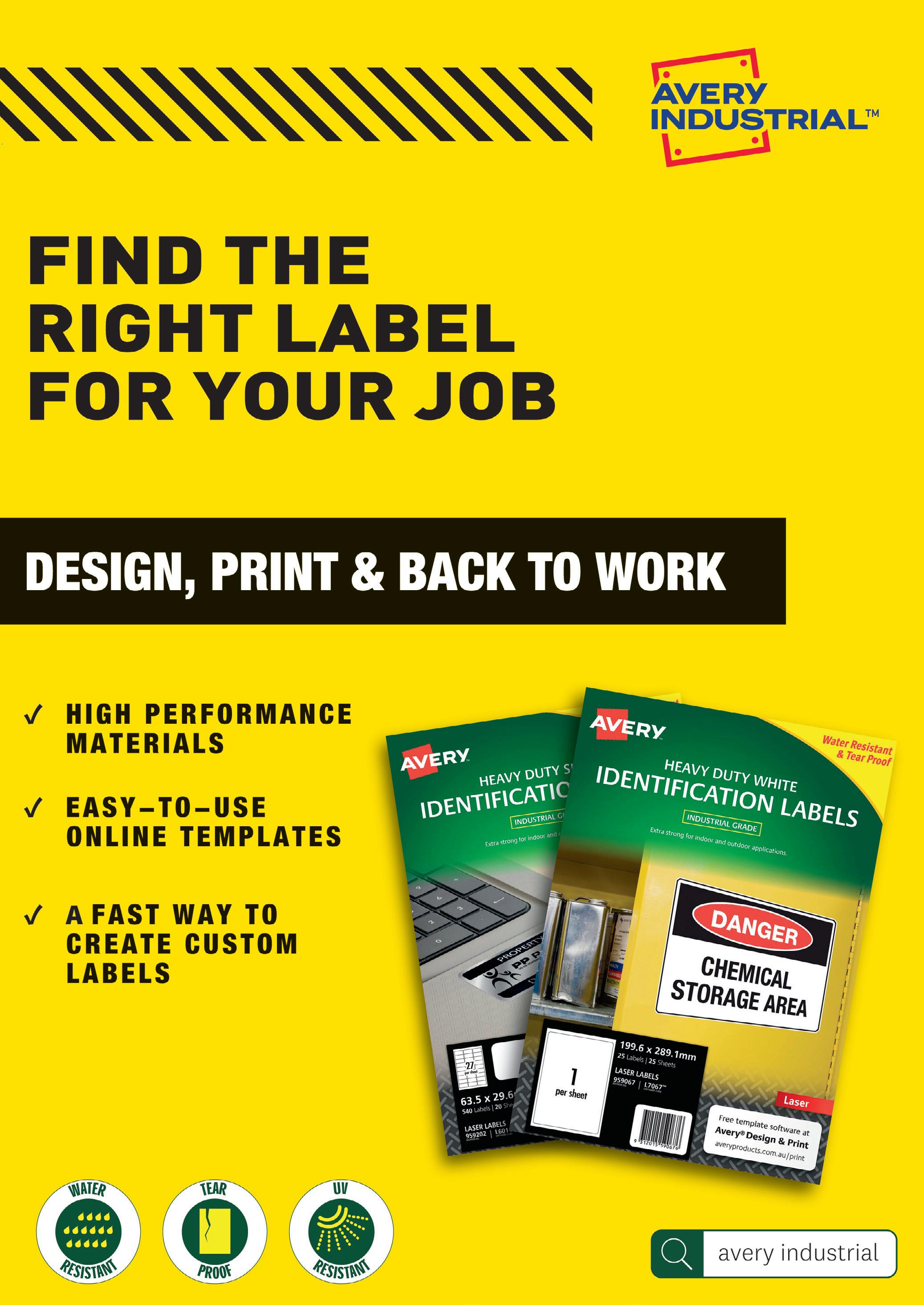
12 minute read
In the news
©stock.adobe.com/au/Minerva Studio
COALMINER DIAGNOSED WITH COAL WORKERS’ PNEUMOCONIOSIS A 61-year-old worker has been diagnosed with coal workers’ pneumoconiosis. The NSW Resources Regulator has published an investigation into how the worker, who has 41 years’ coalmining experience, could have contracted the disease.
The Regulator concluded that the worker’s condition is related to his work as a coalminer. However, it cannot reasonably be determined, based on a review of the evidence obtained, whether the worker contracted the disease as a consequence of exposure while working at a particular mine. Information about the full investigation is available here.

©stock.adobe.com/au/Davizro Photography MELBOURNE ELECTRICIAN DIES WHILE WORKING UNDER HOUSE WorkSafe Victoria is investigating the death of a selfemployed electrician, who died while working at a property in Croydon on 18 August 2020. It is believed the 37-year-old man was electrocuted while working under the house. The fatality brings the number of deaths this year to 47, which is three more than at the same time last year. 82 NOTICES ISSUED IN HUNTER CONSTRUCTION SAFETY BLITZ Following a construction site safety blitz across 54 commercial and residential projects in the Hunter, SafeWork NSW inspectors have issued 82 notices and six on-the-spot fines. Minister for Better Regulation and Innovation Kevin Anderson noted that SafeWork NSW has a zero tolerance approach to those who do not comply with NSW’s workplace health and safety laws.
“While many sites in the region are working hard to keep their workers safe, especially when it came to implementing COVID safety plans, the risks others are taking are totally unacceptable,” Anderson said.
Inspectors issued 26 prohibition notices, 56 improvement notices and six on-the-spot fines, totalling $18,720. The majority of these related to fall from height risks, unsafe scaffolding, electrical risks and poor risk management systems. Anderson noted that the notices are the first step in the process, as the amended Work Health and Safety Act 2011 could see non-compliant businesses facing heavy fines or up to five years in jail.
“SafeWork now has a has a consistent presence in the Newcastle and Hunter building industry, and the construction sites we’ve identified can expect regular visits from inspectors until they clean their act up,” Anderson said.
The NSW Government also introduced a compliance program on 1 September to undertake risk-based inspections of high-rise residential apartment projects, providing Building Commissioner David Chandler with powers to deny occupation certificates for substandard work. Anderson said those overseeing substandard building work will be prosecuted under workplace safety legislation and could also be denied an occupation certificate, meaning apartments cannot be settled.
“We’re entering a new era in building and construction where developers, builders and everyone involved on building sites is on notice: poor safety standards and shoddy,
non-compliant work will not be tolerated,” Anderson said.
©stock.adobe.com/au/Mikael Damkier

IN THE NEWS

$800K ENFORCEABLE ©stock.adobe.com/au/Luis Sandoval M. UNDERTAKING FOR MAULES CREEK COAL MINE The operator of Maules Creek Coal Mine, near Boggabri in north-western NSW, will spend over $800,000 in undertakings, following a collision between two trucks on a main haul road of the mine on 21 April 2018. An enforceable undertaking is a legally binding agreement proposed by a company following an alleged breach, which may be considered as an alternative to prosecution.
Following the rejection of an earlier proposal, Maules Creek Coal (MCCPL) submitted a new WHS enforceable undertaking, which the Resources Regulator has accepted, requiring the company to pay at least $803,613 including the delivery of safety and community projects at a minimum cost of $600,500.
Resources Regulator Executive Director Anthony Keon said MCCPL will undertake a range of safety and community projects that will provide tangible benefits to the workforce, the mining industry and the broader community.
“These include the delivery of a community-wide mental health initiative and donations to Narrabri Shire Interagency Group, the SES and Boggabri Hospital to fund a mental health ‘Community Connect Day’ and much needed emergency and life-saving equipment. These are important initiatives given the significant challenges faced by regional communities, especially in light of the impact of issues such as drought, bushfires and COVID19,” Keon said.
MCCPL, in partnership with the University of Queensland, will undertake a project to promote safe implementation of automation and new technologies to mine sites. Keon believes these shared learnings will help all operators better identify and manage the risks associated with introducing this emerging technology. The undertaking also includes the requirement to fund an Indigenous mentoring program and reimbursing the Regulator’s investigation and legal costs, and in total is the second-highest value mining work health and safety undertaking accepted in NSW.
With workplace manslaughter laws coming into effect from 1 July, Victorian employers have a strong reason to ensure that health and safety is their first priority. Employers that fail to meet health and safety obligations face tough new penalties, if their negligence leads to a worker dying on the job. This includes up to 25 years in prison for individuals or $16 million in fines for corporations.
The new laws will be enforced with support from WorkSafe Victoria’s specialised Fatalities Investigations Team — a dedicated unit responsible for investigating workplace deaths. WorkSafe Victoria has appointed 11 members to this team, including eight experienced WorkSafe investigators and three newly graduated investigators with years of experience with Victoria Police. A total of 13 new investigators graduated in June 2020 and have started enforcing workplace health and safety laws.
WorkSafe has also broadened the criteria that define a workplace death; those killed on the road while working, suicides attributable to a workplace health and safety failure, deaths from industrial diseases such as silicosis, and workplace deaths resulting from a criminal act will be recognised in WorkSafe Victoria’s fatality toll. Under this expanded definition, there have been 41 deaths in Victoria in 2020.
This change strives to ensure that the death of every worker gets the recognition they deserve, and bring increased focused
©stock.adobe.com/au/zolnierek

to workplace health and safety to re-enforce to Victorian employers that they must make it their first priority.
“It is simply unacceptable for any Victorian to go to work one day and never return home. The threat of jail for individuals, or a hefty fine for organisations, should stop those who think it’s ok to put other priorities above the health and safety of their workers in their tracks,” said Colin Radford, WorkSafe Victoria Chief Executive.
Radford believes that changing the definition of a workplace fatality will better recognise all deaths that occur in a workplace, and ensure they get the attention they deserve.
“This will bring increased attention to workplace health and safety issues so WorkSafe can better identify emerging health and safety issues in Victoria. It will also mean more Victorians will be entitled to much needed support following the death of a loved one in a workplace incident,” Radford said.
IN THE NEWS
NT WORKER DIES FALLING FROM THE TRACKS OF AN EXCAVATOR On 29 July, a 37-year-old male worker died at a construction site in the Katherine region of the Northern Territory (NT) after falling from the tracks of an excavator.
The incident occurred at approximately 7.30 am and the root cause is currently unknown.
NT WorkSafe and NT Police are investigating. NT Police will prepare a report for the Coroner.

©stock.adobe.com/au/1jaimages ©stock.adobe.com/au/photostriker

NSW RESOURCES REGULATOR RELEASES QUARTERLY SAFETY REPORT The NSW Resources Regulator has released the Quarterly Safety Report for April to June 2020, to help the industry improve safety management systems and undertake risk assessments at their sites. The report details incidents and trends relating to hazard management, alongside sector-specific information.
‘Roads of other vehicle operating areas’ and ‘fires or explosion’ are hazards that feature regularly in incident notifications to the Regulator. The NSW Resources Regulator also focuses on compliance with legislative requirements associated with principal and other high-risk hazards. In this quarter, keycompliance and enforcement activities included the Resource Regulator’s statutory functions review in the small mines sector, with almost 40% of safety notices issued to small mines.
The NSW Resources Regulator also conducted a proactive inspection program focused on how mine operators are responding to COVID-19 risks. From this, it was identified that most operators had implemented appropriate controls, with only a small number of issues identified which were largely minor in nature.
FATAL FALL LEADS TO $850K FINE FOR CONSTRUCTION COMPANY
Seascape Constructions, a residential construction company, has been convicted and fined $850,000 after a 2017 incident in which a carpenter fell to his death on a building site in Kalkallo, in Melbourne’s north. The company pleaded guiltyto a single charge of failing to ensure that persons other than employees were not exposed to risks to their health and safety by failing to prepare and conduct work in accordance with a safe work method statement (SWMS). ©stock.adobe.com/au/Aisyaqilumar
Seascape engaged the carpenter and a handyman via Gumtree to work at the site and to lay flooring. The incident occurred as the carpenter was lowering a compressed air nail gun by its air hose and fell from an unprotected edge, landing on a concrete slab about 3.1 metres below. The 68-year-old died of head injuries at the scene. It was revealed that the workers were not provided with a SWMS before commencing the high-risk construction work or while performing the work, and that no safety procedures or safe working methods were discussed.
Julie Nielsen, WorkSafe Victoria Executive Director of Health and Safety, said all workers must be appropriatelytrained, equipped and supervised to safely perform their jobs.
“Falls from height are a well-recognised safety hazard and are among the biggest killers of Victorian workers. This death is a

tragic reminder that WorkSafe will not hesitate to prosecute any employer who fails to do all theycan to protect their workers’ health and safety,” said Nielsen.
To prevent falls from height, employers are urged to eliminate the risk by doing all or some of the work on the ground or from a solid construction. The use of passive fall prevention devices, such as scaffolds, perimeter screens, guardrails, safety mesh or elevating work platforms, is also encouraged. A positioning system, such as a travel-restraint system, could help ensure employees work within a safe area, while a fall arrest system, such as a harness, catch platform or safety net, could reduce the risk of injuries in the event of a fall. Employers should also use a fixed or portable ladder, or implement administrative controls.
CASE STUDY Winching solution keeps underground mining moving safely
Australian Certified Winches (ACW) is an Australian-owned company that provides winches and winching solutions for the mining, marine, utilities and construction industries. Australian mining company BHP asked ACW to design a winch capable of hauling double the capacity (100 tonnes) within the same physical space as its previous 50-tonne winch, for underground mining operations, and which also conforms to the specific safety standards that winches used in underground mining must adhere to. ACW used Hydraulink to provide and install hydraulic hoses and fittings that were optimised by expert hydraulic engineering, for a new underground winch. Hydraulink is a multinational brand that provides hydraulic hose and fitting solutions across Australia, New Zealand and the Asia–Pacific Basin. Hydraulink manufactures and distributes hydraulic hoses, fittings, couplers, tube assemblies, adaptors and accessories for a range of industries, including the mining, marine, transport and agriculture industries.
“The solution was to integrate two 350,000 Nm wheel drives inside the winch drum. The winch is to be used to remove longwall machines once the longwall is finished and being moved to another seam. Current methods involve the use of hydraulic cylinders, but these can be limited in stroke length, meaning a lot more time re-rigging the haul rope. The winch has 300 m of rope, allowing for a continuous haul,” said Grant Barrett, Director of ACW. ACW primarily ensures winches are suited to the particular task, and that its clients have the correct documentation and certification to operate under any appropriate regulations. ACW provides mining process winches, designed to retrieve minerals from the ground to stockpile, and mining transport winches, designed to move the material to local refineries and overseas. Some winches used in underground mining must adhere to specific safety standards, such as MDG 33 and AS 61508; such winches are known as winders, and are used to hoist materials at high speed.
“The new winch has an onboard closed loop hydraulic system that is driven by the underground emulsion fluid, so
©stock.adobe.com/au/donvictori0

we needed expert hydraulics assistance in engineering the winch for underground use. So we contacted Hydraulink, and their team ensured all hydraulic hoses and fittings were MDG-41 compliant — including all testing and reporting — which is a requirement for any machinery being used in underground mining applications. The service from Hydraulink was fantastic. They were responsive, practical minded, safety oriented and worked well with my team. I’ll be looking to them for any future Hydraulic hose, fittings, adaptors or service needs,” Barrett said. Mechanical Design Guideline 41 (MDG 41) identifies safe working practices for the manufacture of high-pressure hoses and fittings, including hazard identification, assessment, elimination and reviewing of risk.
As a hydraulic hose, fittings and service specialist, Hydraulink frequently supplies hydraulic components that must comply with local standards and safety compliances. “I was impressed with ACW’s standards and safety compliance focus, and the solution they came up with for this new winch was an outstanding piece of engineering. We were happy to be part of this project and to work side by side with another company that values safety as highly as we do. To make service and maintenance simpler in the future, we’ve set up all the hoses and parts used in this winch with individual part
Factory testing (pictured) of the new winch confirmed it could easily pull more than the required 100 tonnes.


numbers in our system. If ACW need to replace a part in the future, we’ll have all the specifications on file, ready to go,” said Adrian Burgess, Area Sales Manager (Queensland) of Hydraulink. The winch supplied by WCA was factory tested using a 150-tonne load cell and shackles. Testing revealed that it was capable of pulling 120 tonnes with ease.
Hydraulink
www.hydraulink.com.au






